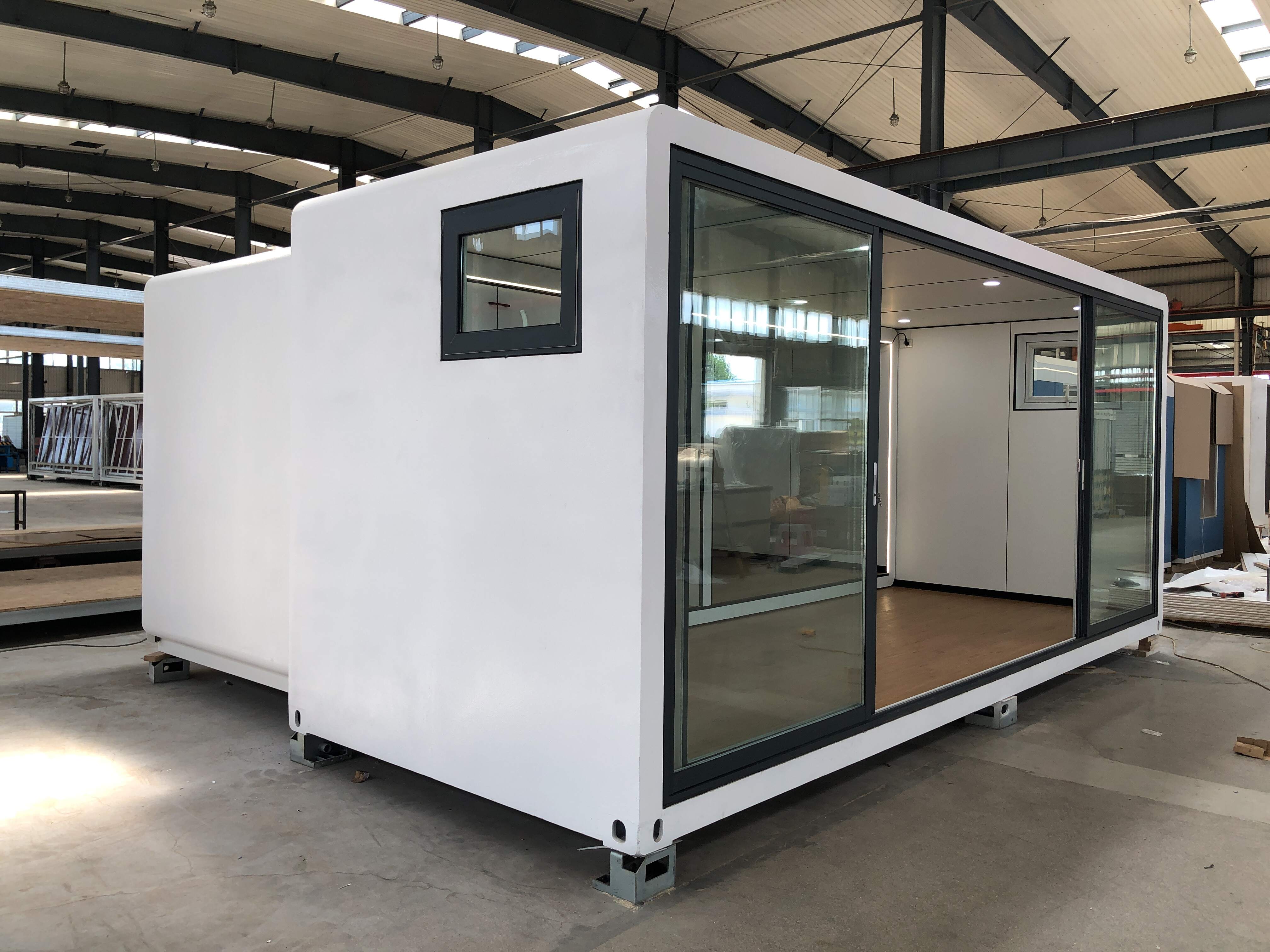Email format error
Email cannot be empty
Email already exists
6-20 characters(letters plus numbers only)
The password is inconsistent
Email format error
Email cannot be empty
Email does not exist
6-20 characters(letters plus numbers only)
The password is inconsistent


20ft container office design
In recent years, the repurposing of shipping containers into functional office spaces has gained immense popularity due to their sustainability, versatility, and cost-effectiveness. Whether you're planning a temporary office space or a more permanent solution, this blog will guide you through the entire process of designing a 20-foot shipping container office. We'll cover various aspects, from layout design to interior decoration, insulation, infrastructure planning, and even compliance with regulations and safety considerations.
Designing the Layout
One of the first steps in creating a shipping container office is deciding on the layout. Common design layouts for a 20-foot container office include open-plan, partitioned, or a combination of both. The open-plan layout maximises the available space and encourages collaboration, while partitioned layouts create individual workstations or meeting rooms.
Structural Features and Advantages
Shipping containers are renowned for their robust and durable structure. Their steel walls, reinforced corners, and standardised dimensions make them suitable for stacking and transporting. This structural integrity translates to security, weather resistance, and easy transport if necessary.
Interior Decoration and Arrangement
When it comes to interior decoration, you have creative freedom. Consider the functional needs of your workspace. Use light, bright colours to create an inviting atmosphere, and choose furnishings that maximise space and comfort. Storage solutions, such as shelves, cabinets, and drawers, are essential to keeping your office organised.
Insulation and Ventilation
Insulating your container office is crucial for temperature control. You can choose from various insulation materials like spray foam, rigid board insulation, or natural alternatives. Adequate ventilation is also vital. Installing windows and vents strategically will ensure fresh air circulation while keeping the workspace comfortable.
Infrastructure Planning
Proper planning for electricity, water supply, and drainage is essential. You may need an electrician and a plumber to ensure all systems work efficiently. Solar panels or wind turbines can be eco-friendly energy sources for your container office, reducing your carbon footprint.
Regulations and Permits
Ensure compliance with local regulations and obtain the necessary permits before setting up your container office. Regulations may cover zoning, building codes, safety, and environmental concerns. Addressing these issues early in the design process can save you time and potential legal troubles later.
Safety and Fire Measures
Safety should be a top priority. Implement fire safety measures, including fire extinguishers, smoke detectors, and fire-resistant materials. A well-planned evacuation plan and emergency exits are also essential.
Soundproofing and Privacy
To maintain a peaceful and productive work environment, soundproofing is crucial. Acoustic panels, double-glazed windows, and sealing gaps can reduce noise infiltration. Additionally, consider the layout to ensure privacy for meetings or focused work.
Lighting and Natural Sunlight
Choosing suitable lighting fixtures is key to a productive workspace. Maximise natural light by adding large windows or skylights. Task lighting and ambient lighting can create a comfortable and well-lit environment.
Sustainability and Green Building
Shipping container offices can be designed with sustainability in mind. Implement green building practices, such as using recycled materials, energy-efficient appliances, and water-saving fixtures. Consider rainwater harvesting and greywater recycling.
Furniture, Storage, and Workspace Planning
Select ergonomic office furniture that suits your needs. Desks, chairs, and storage units should be functional and space-saving. A well-organised workspace encourages productivity and comfort.
Energy Efficiency and Climate Control
Choose energy-efficient appliances and lighting to reduce your office's carbon footprint. For climate control, opt for energy-efficient HVAC systems or even passive cooling methods, depending on your climate.
Exterior Design and Finishes
The exterior of your shipping container office can be customised to your liking. Options include different cladding materials, paint, or even branding to reflect your company's identity.
Humidity and Air Quality Control
Proper humidity and air quality control can enhance the comfort of your workspace. Use dehumidifiers or humidifiers as needed, and maintain good air circulation through well-placed vents.
Temporary or Permanent Use
Consider whether your container office will serve as a temporary or permanent solution. Temporary setups may require less extensive infrastructure, while permanent offices may need more amenities.
Accessibility and Inclusivity
Design your container office to be accessible to all, including people with disabilities. Ensure ramps, wider doors, and accessible facilities are in place.
Decorative Styles and Trends
Choose a decorative style that suits your company culture and your personal preferences. Industrial, minimalist, or nature-inspired designs are popular choices, and trends in office design may influence your decisions.
Designing a 20-foot shipping container office is a creative and practical endeavor. By considering layout, structure, insulation, infrastructure, regulations, and all the other elements discussed in this blog, you can create a comfortable, functional, and sustainable workspace tailored to your needs. Whether you're seeking an eco-friendly, cost-effective solution or a unique, mobile office, a shipping container office might be the perfect choice.